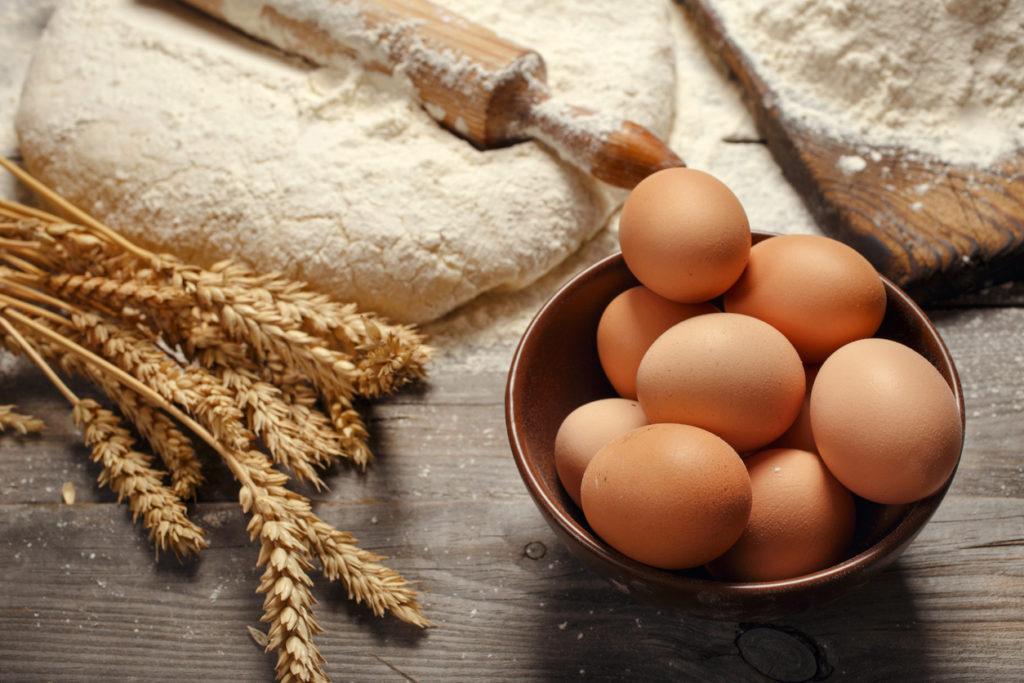- General
Tall bread tales and essential bread science

This time around we’ve found lots of small yet beautiful bread stories for you, all topped off with a nice slice or two of bread science. Enjoy the ride.
Short but sweet bread stories from around the world
The East End of London saw long queues developing for beautiful organic produce at the brand new Saturday Wapping Docklands Market. The small market attracted a load of popular stalls including local farmers and east London traders plus several keen European producers. Shoppers queued for loaves, the lines extended right along Wapping Wall, and as one stallholder said, while everybody was behaving responsibly around social distancing, “It was pretty crazy.”
At the same time the BBC has come under fire for a story that wasn’t really news. They decided a visit by Hugh Grant to Parsons bakery in Frome, Somerset, was newsworthy, and reported upon it. Mr Grant apparently bought a bacon roll. And many, many people have mercilessly taken the mickey out of the BBC ever since for making such a meal of the non-story.
A new Danish bakery in Norwich has sold more than 1000 pastries in its first week. Maggie Christensen, who moved to the UK in 2017, is thrilled. The bakery’s goods are 100% plant-based but they’ve decided not to focus on the fact they’re vegan, letting the food speak for itself.
A while ago we mentioned Love’s bakery in Hawaii, which closed down after 170 years in business. Now memorabilia, baked goods and raw ingredients from the bakery are up for sale at an online auction house, and they’re predicted to sell like hot cakes. Pardon the pun.
Meanwhile the US author and host of the Food Network TV programme Barefoot Contessa, Ina Garten, has created a recipe for ‘outrageous’ garlic bread. It includes an entire head of garlic, lashings of parmesan, the zest of a lemon and masses of butter. The results are extremely crisp and crunchy instead of the traditional-style Italian garlic bread that’s soft, doughy, and oozes garlicky butter.
In Christchurch, New Zealand, a community project is bringing people of diverse backgrounds together to learn about the world’s varied bread cultures. It’s called ‘Together Through Bread’, a collaboration between a community radio station, a non-profit group and a community organisation called A Communal Loaf. Many different breads are being made, all wood fired, and the delegates on each course get to eat them fresh and hot, straight from the traditional oven.
Back home in the UK, around 1200 Asda staff are worried about their jobs following the supermarket giant’s announcement that they’re planning to shut down their in-store bakeries. And in Kent a bakery worker was ‘threatened and racially abused’ after they politely asked a customer to wear a face mask.
Why San Francisco sourdough tastes so different from UK sourdough
It’s a burning question, and one New Scientist magazine reader couldn’t resist asking it. Why does sourdough bread made in San Francisco taste so very different from sourdough from the UK? While some say the flavour of San Francisco sourdough is down to Lactobacillus sanfranciscensis, this isn’t the case – the species is widely found in starters all over the world.
So does it mean UK yeasts are different, or is it something to do with the way the breads are made? In fact there are four main potential reasons for the flavour differences between British and Californian sourdough. The microbes, the flour, the recipe, and the process all have an impact.
Sourdough is sour thanks to the lactic and acetic acid made by bacteria, mostly from the Lactobacillus family. Yeasts make CO2, which aerates the loaf. The microbes originating in the starter, the equipment, the baker’s hands, and the surrounding air also make metabolites that give the bread its flavour.
The microorganisms in flour depend on the kind of flour, where it was grown and the way it was processed. The amount of protein in the flour affects the loaf’s texture and how well it holds bubbles of gas. The amount of water matters because it impacts the dough’s expansion. The mixing style has an effect on the bread’s flavour and texture. So does the amount of time the dough is left to ferment – in the case of artisan sourdough, anything from one to four days. And the temperature at which the dough is kept has an effect. With all these variables at work, it’s no wonder sourdoughs can taste so different.
Why your microwave makes terrible toast
Heating bread in a toaster versus a microwave oven creates drastically different results. Why? First of all, your microwave heats bread from the inside, but your toaster heats it from the outside. Toasted bread’s surface quickly reaches the temperature where the Maillard reaction takes place, which is what makes bread go brown and crisp. Heating a slice of bread in the microwave merely dries it out. It never actually reaches the surface temperature that triggers a browning reaction. But excessive microwave heating can actually burn dry foods from the inside, causing damage you don’t notice until you take a bite – then spit it right back out again!
Free artisan bread samples to your door
Our world is waking up again post-lockdown, and our beautiful breads are selling like hot cakes. If you’d like a free sample box, just ask.



